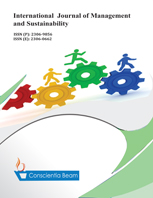ROSCAS Remain Strong in India Despite Greater Financial Inclusion
DOI:
https://doi.org/10.18488/journal.11/2014.3.3/11.3.176.185Abstract
We begin this paper by summarizing various studies which used surveys and economic models to describe the characteristics and benefits of the old tradition of ROSCAs which is prevalent in many developing countries around the world. These studies also document the types of draws and the factors that motivate people to participate in a ROSCA. We expand the information on this tradition in a state in India where ROSCA is referred to as bhishi. During the month of January 2013, we interviewed (in-person & over the telephone) several regular participants living in two metro areas in the State of Maharashtra, namely, Mumbai & Pune. Another smaller city of Miraj was also included. The findings from the interviews in India are illustrative of the creative ways people have taken the old, money-based idea of bhishi and interwoven it with the fabric of social and cultural traditions. It is being kept alive to build and strengthen relationships among friends, relatives, and neighbors. Incorporating the fun dimensions ranging from enjoying different cuisine to taking trips into the old tradition seems to maintain its popularity. This behavior is noteworthy especially with India’s recent entry into the world market as an emerging economic power. Although people with lower incomes still value bhishi in its traditional role as a saving vehicle (and occasionally as a lender of last resort), most middle and upper-income earners strongly believe in this modern evolution of an old tradition and are committed to continue it.

